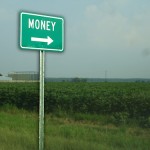Why One Economist Says Austerity Is Hurting Job Growth
As we’ve mentioned before, one of our key online lurking destinations for economic news is the New York Times. And while we don’t often draw on op-ed’s, a recent offering from economist Paul Krugman caught our attention.
In “States of Depression,” Krugman (a self-professed liberal) faults the national push towards austerity for the slow economic recovery.
For those of you familiar with the political-economic arguments about austerity vs. stimulus, this probably doesn’t sound like new ground.
But what is interesting is the comparison Krugman draws between the current recovery, and what our economic rebound looked like during the first Reagan Administration (or “Morning In America,” if you will). The key difference, Krugman says, isn’t federal government spending per se–it’s spending that money at the state and local levels:
“These state and local cuts have led to a sharp fall in both government employment and government spending on goods and services, exerting a powerful drag on the economy as a whole…
Start with government employment (which is mainly at the state and local level, with about half the jobs in education). By this stage in the Reagan recovery, government employment had risen by 3.1 percent; this time around, it’s down by 2.7 percent.
Next, look at government purchases of goods and services (as distinct from transfers to individuals, like unemployment benefits). Adjusted for inflation, by this stage of the Reagan recovery, such purchases had risen by 11.6 percent; this time, they’re down by 2.6 percent.
And the gap persists even when you do include transfers, some of which have stayed high precisely because unemployment is still so high. Adjusted for inflation, Reagan-era spending rose 10.2 percent in the first 10 quarters of recovery, Obama-era spending only 2.6 percent.”
Krugman points out that under Reagan, of course, some of that spending was tied to the arms race. But a lot of it was also local governments providing–and expanding on–basic services, like public safety and education. And that expansion, Krugman writes, created government jobs:
“We’re talking big numbers here. If government employment under Mr. Obama had grown at Reagan-era rates, 1.3 million more Americans would be working as schoolteachers, firefighters, police officers, etc., than are currently employed in such jobs.And once you take the effects of public spending on private employment into account, a rough estimate is that the unemployment rate would be 1.5 percentage points lower than it is, or below 7 percent — significantly better than the Reagan economy at this stage.”
The full op-ed goes into a lot more detail, but basically, he’s arguing that the federal government should have used its borrowing clout to funnel much more money to states than they’ve been getting, so they can create more jobs through increasing spending.
Given New Hampshire’s commitment to lean and frugal government, Krugman’s article becomes doubly intriguing.
Last fall, we liveblogged the Joint Economic session at the statehouse. In preparation for the start of the legislative session, representatives and senators gathered to hear various economic analyses and forecasts. One of the presenters was economist Dennis Delay of the (avowedly non-partisan) New Hampshire Center for Public Policy Studies. We reported:
“In May of 2008, Delay expected about 680k jobs in NH. He’s gradually downgraded his expectations over the years. Now, state has about 630k jobs. ‘So one way to think about us in the Granite State is we’ve lost, in potential growth, 50k jobs from where we thought we’d be.’ Big impact on economy and, subsequently, state revenues…
About 1/6 jobs in public sector. 5/6 jobs are private sector. When private sector was losing jobs during the recession, the public sector saw job growth. In other words, when the private sector lost about 5% of its jobs, the government added 4% to its workforce. ‘It acted as a cushion for the losses we were seeing in the private sector.’
‘That has been reversed.’
Private sector grew about 1-1.5% from last summer, and public sector is shrinking.
‘The public sector is now acting as a drag…it’s slowing overall growth in the economy.’
Recovery and Reinvestment Act (aka: The Stimulus Package) helped provide that public sector ‘cushion,’ but now it’s on the wane.”
Of course, it’s important to bear in mind that we’re talking about two economists speaking in different contexts, for different reasons, and at different times about the role of government during the recovery. But the intersection of these ideas certainly provides food for thought–and debate–which we invite you to partake of in our comments thread.



